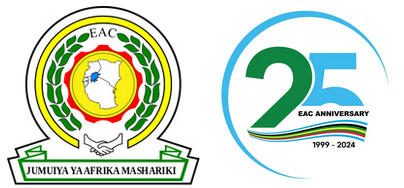
Immigration and Labour
Accelerating economic growth and development of the Partner States by facilitating the free movement of persons and labour through the adoption of common policies and procedures.
In the last few decades a new phenomenon has emerged in the world stage. There has been a movement towards integration. There has been a realisation that when countries pool their resources together they can realise great growth and security that would in a major way improve the lives of their citizens. This calls for the alignment of government departments with the objectives of the integrating states. Immigration is a key player in any integration process because it deals with people’s movements and the movers of factors of production.
Migration Management
Migration lies at the heart of regional integration within the East African Community (EAC). As we strive to realize the fundamental objectives of the East African Common Market Protocol — facilitating the free, safe, and orderly movement of individuals — effective migration management becomes paramount. It is crucial to acknowledge that migration is intricately linked to various challenges such as irregular migration, human smuggling, human trafficking, as well as cross-border crimes like car theft, armed robberies, and fugitives of law.
In an effort to enhance immigration capacities to facilitate free movement of persons and workers the EAC is implementing the following intiatives:
- Visa-Free Entry: All EAC Partner States allow visa-free entry for citizens of other Partner States, fostering business activities and internal trade.
- Harmonized Permit Procedures: Common procedures and fees for entry/work/residence permits have been adopted by the EAC, with some states waiving work permit fees.
- EA e-Passport: Introduced in 2016, the EA e-Passport aims to standardize travel documents across Partner States, with phased issuance in various countries.
- e-Machine Readable Travel Documents: Partner States are urged to implement electronic machine-readable travel documents, with progress varying across states.
Labour and Employment
Labour and employment issues are central to the EAC's vision of achieving sustainable development, social inclusion, and prosperity for all its citizens. Through collaborative efforts and robust policy frameworks, the EAC aims to create an enabling environment for productive and fulfilling employment opportunities across the region.
Key initiatives and developments within the East African Community (EAC) aimed at promoting labour rights, mobility, and integration:
- Proposal for Sectoral Council: Worki is currently ongoing to implement the proposal to establish a Sectoral Council dedicated to labour, employment, and migration matters, aiming for faster policy decisions.
- Regional Labour Migration Policy: A draft policy aims to govern labour migration, protect migrant workers' rights, and maximize migration benefits.
- Coordination of Social Security Benefits: Efforts are underway to establish regulations for coordinating social security benefits among Partner States.
- EAC Common Market Scorecard: The Scorecard tracks compliance with labour movement and establishment rights, with ongoing efforts to implement its recommendations.
- Exchange of Young Workers Programme: A framework is being developed to facilitate the exchange of young workers among Partner States.
- EAC Manpower Survey: A collaborative effort aims to conduct manpower surveys across Partner States to develop a regional database, though budgetary constraints may impact the frequency of surveys.
